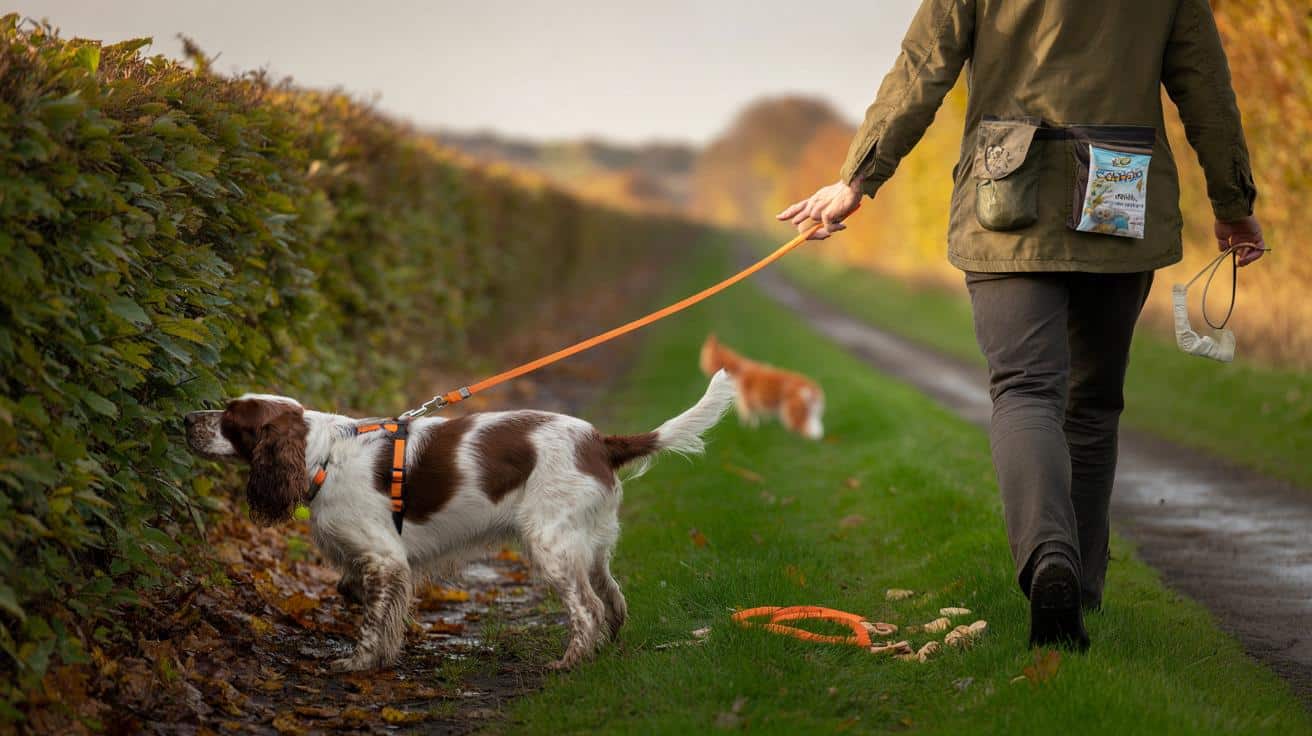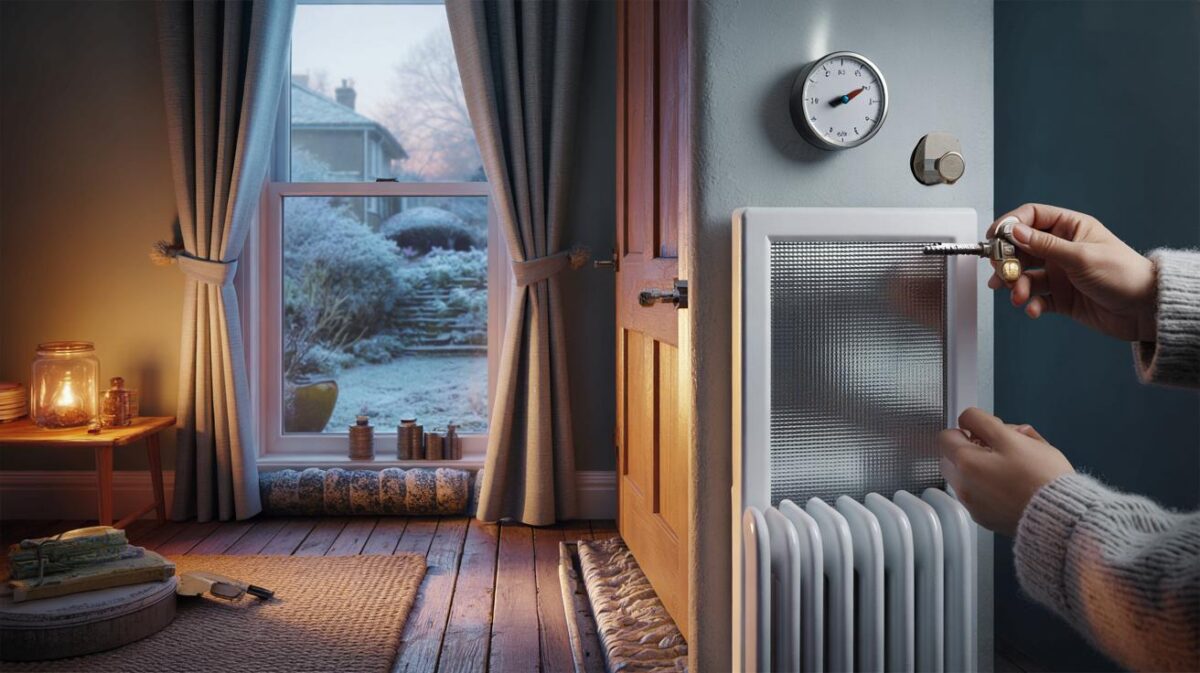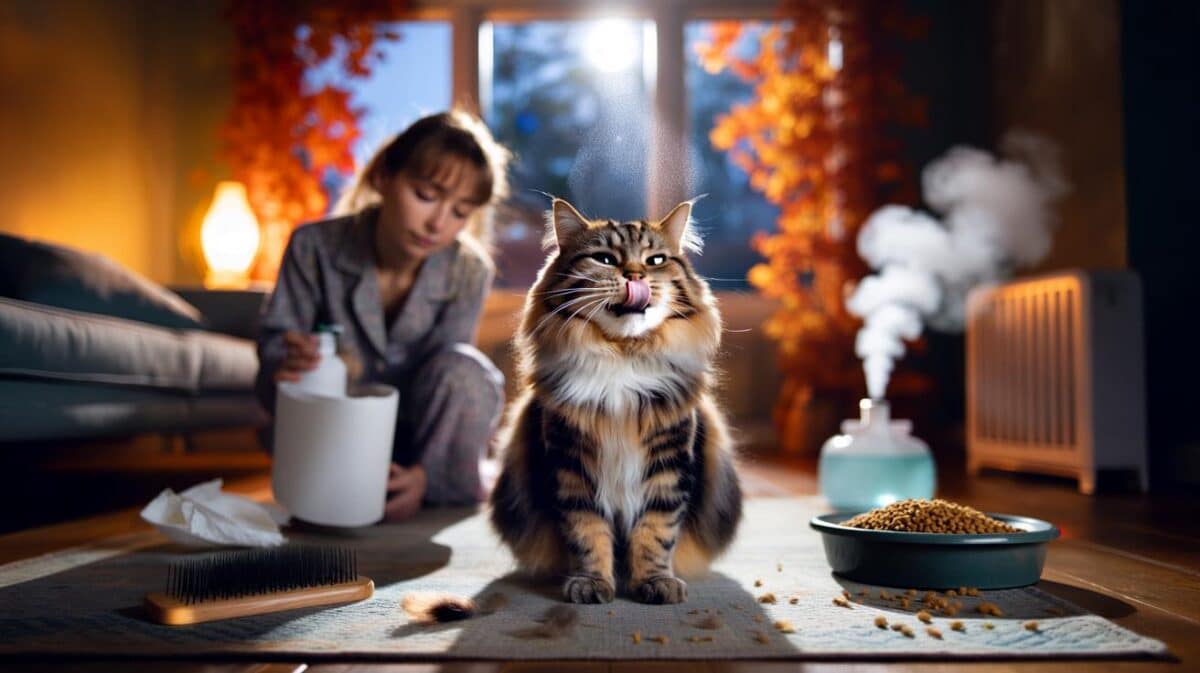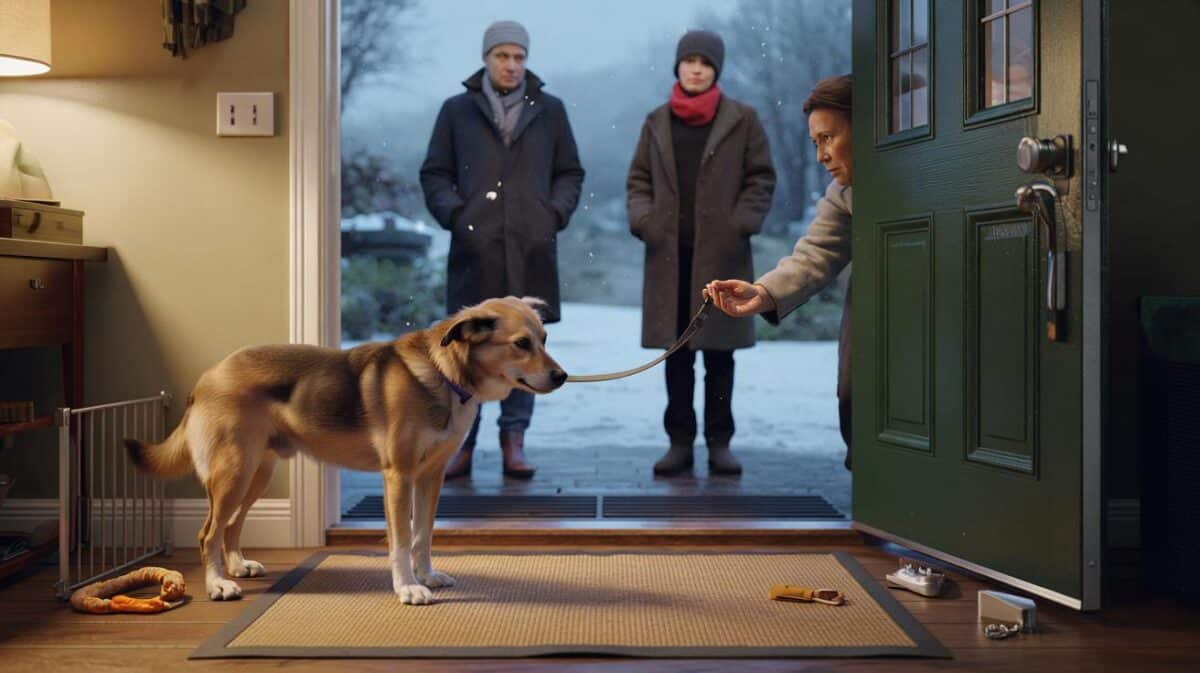Across the UK, fox activity surges and hedgerows brim with odours that thrill dogs and test humans. You can steer that nose without ruining the fun, keep your carpets safe, and cut emergency bath time.
Why dogs love foul scents
Dogs don’t roll in stink to wind you up. They carry ancient habits that once helped canids hunt and keep safe. Strong smells work like camouflage, dulling a dog’s natural odour so prey or rivals notice less. Scents also carry social data. Urine, carrion and faeces offer status, diet and health signals that matter to a nose with 100 million scent receptors.
Fox poo, fishy carcasses and manure top the British hit list. Damp leaves and field margins hold scent longer, so autumn raises the odds. Your dog reads those signals as we read headlines: fast, rich, irresistible.
Watch for three red flags before a roll: deep, fixed sniffing; a sudden freeze; a shoulder tilt that loads the body like a spring.
Stop the roll before it starts
Read the warning signs
Move early the moment the nose locks on. Step between your dog and the hotspot. Shorten the lead. Turn your body away from the target and invite movement with a cheerful cue.
Interrupt with value, not volume
- Carry two reward levels: everyday kibble and “jackpot” treats with high scent value, such as sprats or cheese.
- Use a patterned cue for leaving odours: “This way!” plus a swift turn and a handful of small rewards scattered on grass.
- Follow with a short play burst (10–30 seconds) to reset the brain and bleed off that urge.
The 72-hour reboot plan
This mini programme builds a solid stop–recall chain fast. Keep sessions short and upbeat.
- Day 1 (three 5-minute sessions): play name game indoors. Say the name once. When eyes flick to you, toss a treat behind you so the dog turns away and then back for another.
- Day 2 (two 7-minute sessions): move to the garden. Add a “leave” cue with low-value distractions. Pay big for turning with you for five steps.
- Day 3 (two 10-minute walks): use a 5–10 metre long line on a harness. Practise “This way!” the instant sniffing deepens. Scatter-feed. Then reward with permission to sniff a clean patch.
Sniffing is a need, not a nuisance. Trade access to safe smells for attention, and the stink zones lose their grip.
Smart kit and what to carry
| Item | Why it helps | Typical cost |
|---|---|---|
| 5–10 m long line + Y‑front harness | Gives freedom while you keep control; reduces neck strain during rapid turns. | £25–£45 |
| Two-tier treats | Outbids fox scent without shouting; builds lightning-fast responses. | £3–£6 |
| Pocket tug toy or ball | Quick play burst replaces the thrill of rolling. | £5–£12 |
| De‑odorising wipes | Buys you time until a proper wash. | £4–£8 |
Map the hotspots before your dog does
- Field margins and bridleways: high fox traffic, especially at dawn and dusk.
- Car parks and lay‑bys: food waste and diesel carry layered scents.
- Watercourse edges: dead fish after floods, stagnant puddles rich in odour.
- Autumn leaf drifts and compost heaps: perfect scent traps after rainfall.
Walk a metre off the hedgerow. Cross open ground diagonally to avoid scent pockets. Switch routes every few days so any single track loses novelty.
When the worst happens: your clean‑up protocol
Fast field fix
- Remove chunks with a leaf or glove. Don’t smear.
- Blot with dry tissue before any water. Water first can spread fat‑soluble odours.
- Use a pet-safe wipe on fur tips. Keep it away from eyes and genitals.
Home de‑stink, the safe way
- Brush out dried debris. Work with the coat, not against it.
- Mix 1 litre lukewarm water with 1 tablespoon bicarbonate of soda and 1 teaspoon mild dog‑safe wash. Sponge on, wait 3 minutes, rinse well.
- Follow with a dog shampoo. Avoid tea tree and strong essential oils; they can irritate skin.
- Dry thoroughly to prevent damp skin flare‑ups. Ventilate the bathroom.
Limit full shampoos to the smelly area to protect natural oils. Patch test any new product on a small spot. If odour persists, repeat the bicarbonate mix the next day rather than scrubbing harder.
Skip the bleach and human perfumes. They mask for minutes and may drive your dog to roll again to “fix” the new scent.
Health angles you shouldn’t ignore
Fox and rodent urine can carry leptospirosis, which spreads in stagnant water and muddy run‑off. Vaccination schedules reduce risk; your vet can advise on timing. Rolling also adds exposure to roundworm eggs, Giardia and bacteria that trigger diarrhoea. Wash hands after handling a smelly coat. Keep regular worming and flea control up to date. If your dog develops sore skin, vomiting, or lethargy after a roll, call the vet.
Training that beats temptation
The three-cue toolkit
- “Find it”: scatter five small treats on grass to redirect the nose.
- “This way!”: turn 180 degrees and jog five steps, then pay.
- “Sniff time”: release cue for clean patches, so your dog learns patience gets access.
Run three micro‑drills per walk. Each takes under 30 seconds. Target eight wins out of ten attempts before you raise difficulty.
Chase certainty, not perfection. Aim for 80% success across a week. If your dog ignores four of five stink spots, you’re winning.
When to bring in a professional
Seek help if rolling happens on most walks, if your dog guards stink patches, or if recall breaks down around livestock or roads. A qualified, reward‑based trainer can coach timing, refine your cues and adjust the environment. Two to four sessions often reset habits that have brewed for months.
Seasonal tactics that pay off
- Shift walk times away from dawn and dusk during peak fox activity.
- After heavy rain, use urban parks or open fields for 48 hours while hedges recharge with scent.
- Bag and bin any found fish or food waste on beaches to prevent repeat incidents.
Extras that make life easier
Budget check: four emergency grooms at £30 each beats £120 in a month. A long line, treats and a short course with a trainer can cost less and cut future bills. Keep a “stink kit” in the car: nitrile gloves, bin bags, wipes, old towel and a sealed pot of bicarbonate mix.
Two quick scent games meet the nose’s needs without the mess. “Shell game”: hide a treat under one of three cups, shuffle, and cue your dog to find. “Scent trail”: drag a treat pouch across the lawn and stash it, then send your dog to track. Ten minutes of nose work can halve the urge to dive into the next foul patch.
For young dogs, set a weekly target: five calm walk‑bys of tempting spots, three rapid recalls from mid‑sniff, and two controlled sniff permissions on your cue. Track results on a fridge chart. Small wins stack fast, and clean carpets feel like a bonus rather than a miracle.








